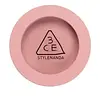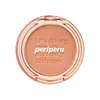What's inside
What's inside
 Key Ingredients
Key Ingredients

 Benefits
Benefits

 Concerns
Concerns

 Ingredients Side-by-side
Ingredients Side-by-side

Talc
AbrasiveMica
Cosmetic ColorantCI 77891
Cosmetic ColorantOctyldodecyl Stearoyl Stearate
EmollientPhenyl Trimethicone
Skin ConditioningSilica
AbrasiveNylon-12
CI 77491
Cosmetic ColorantMagnesium Myristate
Magnesium Stearate
Cosmetic ColorantDimethicone
EmollientMacadamia Ternifolia Seed Oil
EmollientPropanediol
SolventHdi/Trimethylol Hexyllactone Crosspolymer
Lauroyl Lysine
Skin ConditioningMethicone
EmollientHydrogenated Lecithin
EmulsifyingTriethoxycaprylylsilane
CI 77499
Cosmetic ColorantCI 77492
Cosmetic ColorantCI 19140
Cosmetic ColorantCI 77007
Cosmetic ColorantCI 73360
Cosmetic ColorantCI 75470
Cosmetic ColorantTalc, Mica, CI 77891, Octyldodecyl Stearoyl Stearate, Phenyl Trimethicone, Silica, Nylon-12, CI 77491, Magnesium Myristate, Magnesium Stearate, Dimethicone, Macadamia Ternifolia Seed Oil, Propanediol, Hdi/Trimethylol Hexyllactone Crosspolymer, Lauroyl Lysine, Methicone, Hydrogenated Lecithin, Triethoxycaprylylsilane, CI 77499, CI 77492, CI 19140, CI 77007, CI 73360, CI 75470
Talc
AbrasiveMica
Cosmetic ColorantMethyl Methacrylate Crosspolymer
Diisostearyl Malate
EmollientOctyldodecyl Stearoyl Stearate
EmollientVegetable Oil
Skin ConditioningDimethicone
EmollientMagnesium Myristate
Isocetyl Myristate
EmollientHydrogenated Lecithin
EmulsifyingAluminum Hydroxide
EmollientTitanium Dioxide
Cosmetic Colorant1,2-Hexanediol
Skin ConditioningGlyceryl Caprylate
EmollientMethicone
EmollientHelichrysum Italicum Flower Water
Skin ConditioningCI 19140
Cosmetic ColorantCI 77742
Cosmetic ColorantCI 73360
Cosmetic ColorantCI 77499
Cosmetic ColorantCI 77007
Cosmetic ColorantTalc, Mica, Methyl Methacrylate Crosspolymer, Diisostearyl Malate, Octyldodecyl Stearoyl Stearate, Vegetable Oil, Dimethicone, Magnesium Myristate, Isocetyl Myristate, Hydrogenated Lecithin, Aluminum Hydroxide, Titanium Dioxide, 1,2-Hexanediol, Glyceryl Caprylate, Methicone, Helichrysum Italicum Flower Water, CI 19140, CI 77742, CI 73360, CI 77499, CI 77007
 Reviews
Reviews

Ingredients Explained
These ingredients are found in both products.
Ingredients higher up in an ingredient list are typically present in a larger amount.
CI 19140 is also known as Tartrazine. Tartrazine is a synthetic dye used in cosmetics, foods, and medicine to add a yellow color.
Tartrazine is created from petroleum and is water-soluble.
Some people may experience allergies from this dye, especially asthmatics and those with an aspirin intolerance.
Learn more about CI 19140Ci 73360 is a synthetic red-pink dye.
This pigment is called Ultramarine blue lazurite. It gives a saturated blue color, but can be used to create other colors as well.
According to the manufacturer, it is usually made from kaolin, sodium sulfate, sodium carbonate, sulfur, and charcoal.
Ci 77499 is also hydrated iron III oxide. It is created from mixing red and black iron oxides. This helps give shades of darkness to a product.
Iron III oxides are classified as inorganic chemicals for coloring.
Dimethicone is a type of synthetic silicone created from natural materials such as quartz.
What it does:
Dimethicone comes in different viscosities:
Depending on the viscosity, dimethicone has different properties.
Ingredients lists don't always show which type is used, so we recommend reaching out to the brand if you have questions about the viscosity.
This ingredient is unlikely to cause irritation because it does not get absorbed into skin. However, people with silicone allergies should be careful about using this ingredient.
Note: Dimethicone may contribute to pilling. This is because it is not oil or water soluble, so pilling may occur when layered with products. When mixed with heavy oils in a formula, the outcome is also quite greasy.
Learn more about DimethiconeHydrogenated Lecithin is created from the hydrogenation of lecithin (a group of phospholipids). Hydrogenation is a chemical reaction between hydrogen and another element.
This ingredient is an emollient and emulsifier. As an emollient, it helps soften skin by trapping moisture within. As an emulsifier, it prevents oil and water ingredients from separating.
We don't have a description for Magnesium Myristate yet.
Methicone is a type of silicone and is a simpler form of dimethicone.
Silicones are used to enhance the texture of products and have emollient properties. Methicone is used to give products a silky texture and improves spreadability.
Mica is a naturally occurring mineral used to add shimmer and color in cosmetics. It can also help improve the texture of a product or give it an opaque, white/silver color.
Serecite is the name for very fine but ragged grains of mica.
This ingredient is often coated with metal oxides like titanium dioxide. Trace amounts of heavy metals may be found in mica, but these metals are not harmful in our personal products.
Mica has been used since prehistoric times throughout the world. Ancient Egyptian, Indian, Greek, Roman, Aztec, and Chinese civilizations have used mica.
Learn more about MicaOctyldodecyl Stearoyl Stearate is created from stearic acid.
It is an emollient and thickens the lipid (oil) portion of a product. Due to its emollient properties, it may not be fungal-acne safe.
Talc is a clay mineral. It helps absorb moisture and improve the texture of products. Like other types of clay, Talc can have a slight exfoliating effect on skin. Talc can be added to increase the volume of products.
Some Baby powders are made by combining talc with corn starch. The word "talc" comes from Latin and originates from Arabic. Talc is a mineral commonly found throughout the world.
If you have any concerns about using talc, we recommend checking out the FDA's official page.
Learn more about Talc